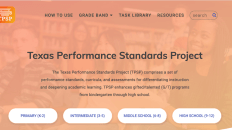What do you think of when you hear PLCs? The idea of Professional Learning Communities in schools has been in practice for decades. The PLC teams focused on what students were learning, how they would know, and what they would do if students did not learn. That’s powerful, but sometimes not enough. Sometimes, teams need time to discuss the best evidence they can find to impact student learning before they begin planning lessons.
My personal experience with leading PLC teams in a school started when I began my career as a high school principal at a large comprehensive school with over 2800 students. The high school was located in Merced, CA, and it had been identified as a school requiring state academic intervention since it hadn’t met state or federal accountability criterion for two years. Like many leaders in a struggling school, I focused on the collaborative teacher teams already in place at the school. I knew effective teacher teams needed to analyze student achievement data in a structured way to identify learning gaps. I quickly learned that they had attended PLC training in the past and believed they were followed the prescribed model. They weren’t since it had deteriorated into a modified model that barely resembled the one they learned. This is what often happens with PLCs in schools.
To address this frequent problem with the current implementation of Professional Learning Communities in schools, Dr. Douglas Fisher and Dr. Nancy Frey created the PLC+ framework, built upon the John Hattie research data, to design a comprehensive system of engaging educators in a cycle of learning through inquiry. They propose a new structure for professional learning communities that focuses on teaching for impact on student learning. They focus the collaborative discussions using the following questions:
Where are we going?
Teachers need to be able to analyze the TEKS for Student Expectations in order to develop rigorous learning intentions or goals and to design explicit success criteria. They then need to design lesson plans with those goals and success criteria in mind. What would students know and do to demonstrate mastery of the TEKS? This question and the resulting teacher lesson planning is integrated into the Texas Effective School Framework.
Where are we now?
Fisher and Frey note that teachers often spend time teaching what students already know. With this PLC+ question, collaborative teams analyze real time data from formative assessments and ask themselves, “Where are my students today in their learning?” They then can set a common learning intention or goal. Common assessments and data collection systems need to be considered as part of this question.
How do we move learning forward?
Doug Fisher says that many time teachers in PLC teams have student learning data but no plans to change the data. With this question, teacher teams work on identifying evidence based instructional strategies that will positively impact student learning. What instructional strategy is likely to work with students? What evidence do we have that it works? Additionally, the PLC+ framework integrates a process designed by Education Trust to have teachers analyze the assignments they give students. Are they aligned to the TEKS and match the rigor of the Standards? Do they match the instruction students are receiving?
What did we learn today?
With this question, the PLC+ framework asks teachers to be Expert Noticers. Teachers who are experts at building their Expert Noticing skills get better outcomes from their students. By watching student learning during a lesson, they notice classroom behaviors to be able to determine if students are exhibiting patterns of misconceptions or lack of understanding of critical content. A tool for visualizing data is provided by the framework which allows teachers to examine data to assess student progress vs. achievement. Which students showed growth? Which students didn’t show growth? Why?
Who benefitted from our efforts and who did not?
Finally, PLC+ teams consider how they can remove barriers to learning. Part of the Texas Accountability domains includes closing the achievement gap, and this question addresses this idea. Are there groups of students who didn’t achieve? Why did that happen? With the last PLC+ question, teams dig deeply into equity and bias issues and how to design instruction to address those issues and barriers. Schools addressing social emotional learning will find this question supports that initiative.
Want to learn more about PLCs and Visible Learning?
Checkout our PLC+ Visible Learning Institute on September 20th.
Mary Black worked with teachers and principals in creative and strategic planning for curriculum and instruction at schools with diverse student populations. She has years of leadership experience in secondary schools, beginning her educational career as a high school English teacher in an urban high school, also serving as a high school principal.






Add comment